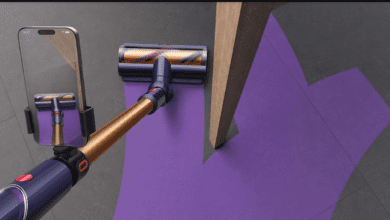Thin, light and beautiful: HUAWEI Nova 10 smartphone review

We continue our acquaintance with the sub-flagship nova 10 series from HUAWEI. Earlier we talked about the younger model in the face of nova 10 SE, and today we’ll talk about the middle and main models of nova 10.
Compared to the younger one, it promises to offer better finishing materials, more productive hardware, and more advanced cameras.


PRICES, PACKAGING, AND COMPLETE SET
nova 10 is available in 8+128 GB memory configuration. At the start, the smartphone was available for 40 thousand rubles, but at the time of writing these lines, it has noticeably fallen in price and is sold in large networks for 32 thousand rubles. The body of the device is available to customers only in two classic colors – shimmering silver and shining black. A sample of the device in black color came to us for testing.
In terms of packaging, everything is quite standard. White cardboard brick with logos and inscriptions in the form of golden engravings. There are no extra images on the box, and you can find out about the color of the model before opening it from the technical sticker on one of the ends of the lid.
Inside, the user is greeted directly by the smartphone itself, packed in a paper envelope and laid in a cardboard form. Under the latter is another small box that stores a clip for the SIM tray and a transparent silicone case. In special niches at the very bottom of the box are the proprietary HUAWEI SuperCharge 66W power supply and a USB-C to USB-A cable for charging and transferring files to a PC. The kit has everything that the owner may need.

APPEARANCE, SCREEN, AND SOUND
In terms of design, nova 10 does not change the traditions of the series, trying at least in appearance and tactile sensations from materials to keep up with the brand’s flagships. The case front and back are made of glass rounded at the wide ends, as in the previous two generations. This solution visually reduces the bezels on the sides of the screen but may lead to accidental clicks for some users. On the other hand, if you use a smartphone in a case, then the probability is reduced to a minimum. The case, by the way, should be put on right away, since the black mirror surface of the back cover is very easily soiled and instantly collects fingerprints.
The smartphone turned out to be very thin. The dimensions are 162.2 x 73.9 x 6.9 mm, which makes it almost 1 mm thinner than the nova 9 (160 x 73.7 x 7.8 mm). Naturally, these dimensions do not take into account the camera block on the back, which sticks out by about 3-4 mm. The weight of the smartphone is also not large and is only 169 grams.
The solution with rounded glass made it possible to make the frame of the smartphone very thin on the sides. The tested sample, it is made in jet black with a matte texture that shimmers nicely in the light. The frame material is plastic, not metal.
The controls in the form of an unlock / power button and an inseparable volume rocker are, as usual, located on the right side just above the middle. The power button is highlighted with a small embossed red stripe, adding a bit of color to the austere design. It is expected that on the opposite end, due to its small thickness, the manufacturer did not build anything in, and distributed all the connectors and technical holes between the lower and upper sides of the frame.
Above you can see the hole for an additional microphone, as well as an additional small perforation of the speaker, which is used here to create a stereo effect when listening to multimedia content. From below, everything is quite standard – here, as usual, there are holes for the main microphone and a multimedia speaker, a USB-C 2.0 connector with OTG support, and a hybrid slot for installing either two nano-SIMs or one nano-SIM and an NM expansion card. There is no 3.5 mm audio jack.
The front of the device uses a curved screen on the sides, which is covered with the same curved glass on top. In addition, for additional protection against scuffs and scratches, a durable protective film coated with a good oleophobic coating has been applied to the screen from the factory. There is a frame around the screen. On the sides, it has a thickness of 2 mm, and above and below it is the same and its width is about 2.5-3 mm.
Above the display, you can see a thin but wide gap, behind which the earpiece is hidden. The front camera sensor is embedded in the top middle of the screen, which, like in any other smartphone, is used to unlock the face. When there is a lack of light, face recognition sometimes does not work, but in other cases, it works without problems and unlocks the smartphone in less than a second.
In addition, under the display is hidden an ambient light sensor to automatically adjust the brightness of the screen and a proximity sensor to turn off the display and prevent accidental clicks during calls. The fingerprint sensor is embedded under the display and it works without any problems, but the location at the bottom edge, and not closer to the middle, does not seem very convenient to us.
The display itself is slightly larger than the nova 9. The HUAWEI nova 10 has a 10-bit 6.67″ OLED display with a resolution of 1080 x 2400 pixels. The screen aspect ratio is 20:9 and the pixel density is 393 PPI. Refresh rate screen – 120 Hz, and by default, it works in dynamic mode, that is, it automatically adjusts from what is happening on the screen. The interface works very smoothly, scrolling pages in the browser and navigating on the smartphone is especially good. The touch layer display supports up to 10 touches simultaneously and fulfills them with a frequency of 300 Hz, which is, very fast and accurate, which is important for fans of competitive mobile games.
The display in this smartphone is not inferior in brightness to flagship solutions. The brightness of this screen when set to 100% manually is about 850 nits, in automatic mode in direct sunlight, the brightness can reach up to 1250 nits. The screen has support for playing HDR content. PWM is present, but in the settings, you can enable the DC Dimming function to reduce screen flicker. Also in the display settings, you can select one of two color rendering modes (normal and bright), adjust the color temperature, turn on the black-and-white reading mode, and adjust the blue spectrum filter. In addition, the display supports the “Always On Screen” feature, which has many built-in sleep screen themes.
As for the sound, both the speaker on the bottom end and the conversational driver on the top are responsible for the stereo sound. The sound is quite loud, and at maximum volume, the speakers do not wheeze. The stereo effect is not bad, but the speaker on the bottom slightly outshines the top one. In general, the sound quality of a smartphone is quite good. For games, watching TV shows and movies will be enough. There are no sound settings for speakers, but there are for connected headphones, including wireless ones. You can add surround sound, as well as adjust the sound with a 10-band equalizer, or choose from presets for different genres of music. Of the audio codecs, when connected via the Bluetooth protocol, SBC, AAC, and LDAC are available to the user of the headphones.

HARDWARE, COMMUNICATIONS, BATTERY, AND TESTS
With the performance of the nova 10, things are noticeably better than the younger brother nova 10 SE. And all because last year’s Qualcomm Snapdragon 778G 4G is used as the SoC, which performed well in top-end mid-range models or sub-flagships, and the letter G in the name hints that it was simply created for games. This 8-core chip is built on a 6-nanometer process technology. It has 1 Kryo 670 Prime (Cortex-A78) core at 2.4GHz, 3 Kryo 670 Gold (Cortex-A78) cores at 2.2GHz, and 4 Kryo 670 Silver (Cortex-A55) cores at 1, 9 GHz. The Adreno 642L accelerator with a frequency of 490 MHz, 2 computing, and 384 shader units is responsible for the graphics. 8 GB LPDDR5 RAM and 128 GB UFS 2.1 internal memory.
The smartphone supports mobile networks up to 4G LTE (Сat. 24 – 1200/210 Mbps) and is also equipped with Bluetooth version 5.2, NFC, and Wi-Fi 6 (802.11 a/b/g/n/ac/ax) modules. There is a navigation system with support for GPS, Glonass, GALILEO, QZSS, NavIC, SBAS, and BDS.
The autonomy of the smartphone is provided by a non-removable 4000 mAh lithium-polymer battery. The phone supports 66W fast-wired charging. It allows you to charge the phone by 50% in 22 minutes, and fully – in 45 minutes. There is no wireless charging, but there is a reverse wired 5W. With everyday moderate use (calls, web surfing, instant messengers, listening to music, and watching videos), one smartphone charge is enough for a full day of use. nova 10 is capable of playing online videos for around 9-10 hours. When using synthetic tests and games, it was discharged in about 5-6 hours.
In basic AnTuTu and 3D Mark tests, the phone was identified as HUAWEI nova 10 and NCO-LX1. In AnTuTu 9, the smartphone scores 506,453 points, and ranks 97th among Android solutions:
CPU – 145 427
GPU – 159,716
MEM – 86 745
UX – 114 565
In 3D Mark, the smartphone was able to cope with all tests and overall performance at the level of its upper limit of the middle class of devices:
Wild Life Extreme – 685
Wild Life Extreme Unlimited – 672
Wild Life Extreme Stress Test – 694 (best), 589 (worst)
Wild Life – 2500
Wild Life Unlimited – 2500
Wild Life Stress Test – 2500 (best), 2476 (worst)
Wild Life Unlimited Stress Test – 2504 (best), 2154 (worst)
Sling Shot Extreme OpenGL ES 3.1 – 5103
Sling Shot Extreme Unlimited OpenGL ES 3.1 – 5429
Sling Shot Extreme Vulcan – 3825
Sling Shot – 6355
Sling Shot Unlimited – 6720
In normal mode, the smartphone was unpleasantly surprised with rather strong throttling, which reduced the performance of the chip by up to 52% in the CPU Throttling Test application test. However, if you switch the smartphone to performance mode, then the performance remains always at a high level and the processor does not throttle. True, this affects the heating of the battery and the increase in the power consumption of the smartphone.
When performing everyday tasks, the system is very cold – in the phone menu, the average temperature of the processor and battery were 37 and 31 degrees, respectively. When loaded with games, the smartphone heats up only in the camera area, which adds a little discomfort in games. The maximum temperature did not exceed 55 degrees for the processor and 38 for the battery.
We tested smartphone performance in games using CarX Highway Racing, World of Warships Blitz, and Last Day on Earth: Survival. All projects were launched at the highest available settings and their performance was at a high level. Drawdowns during a long game were not observed.

CAMERAS
The two-level camera block on the back cover is located in the upper left corner of the smartphone. It is made in the form of an oval with straight ends. The lower platform has faceted chamfers along the edges and is decorated with golden inscriptions with technical information about the camera. The top is also decorated with gold. Along the edges is a faceted chamfer, and the main module is surrounded by a gold ring. Space design can be traced in the details, which are inherent in the entire 10-series. A single LED flash is located outside the sites. This year’s model has lost its 2-megapixel macro module, while the other three seem to have remained unchanged:
50 MP Ultra Vision Wide Angle, f/1.9, 27mm, PDAF
8MP Ultra Wide, f/2.2, 112˚
Depth sensor 2 MP, f/2.4
Perhaps the main change in the cameras of the smartphone was the front camera, which has grown significantly in the resolution of the module:
Ultra-wide angle 60MP, f/2.4, 100˚
In terms of software, everything is quite standard. The interface is familiar, like other smartphones on the EMIU shell. In the “Camera” application, the main space is occupied by the viewfinder window, and at the bottom of the screen, there is a horizontal carousel of standard modes (night, portrait, photo, video, vlog, and transition to other additional modes), the shutter button, switching the camera from the main to the front, as well as the transition to the last photo/video taken in the gallery.
Above the viewfinder window, icons of various options are displayed, such as flash, AI assistant, AI lens, and filters, as well as going to the settings menu. A zoom switch (wider, 1x, 2x) is available on the viewfinder screen by default, which primarily serves to switch between wide-angle and ultra-wide-angle lenses, as well as digital zoom adjustment. Among the additional modes available to the user are pro, time-lapse, slow motion, high resolution, story creator, live photo, panorama, documents, aperture, watermark, and super macro.
The main feature of the main wide-angle Ultra Vision module is the special structure of the RYYB matrix, where yellow subpixels are used instead of green ones. This, according to the manufacturer, should increase the brightness by 40 percent compared to RGGB matrices. By default, the camera shoots at a resolution of 12.5 megapixels in the mode of combining 4 sub-pixels into one.
In conditions of sufficient light, the camera produces good clear images without noise, with a wide dynamic range and natural color reproduction. Autofocus works adequately and quickly. At night, the camera does a good job of taking pictures automatically thanks to AI, so you don’t even have to use night mode. True, the module lacks optical stabilization, which in low light conditions can lead to a blurry picture. An additional 2MP depth sensor works in conjunction with the main camera to create background blur in portrait mode. The bokeh around the subject is quite good. The zoom here is digital. At 2x magnification, a cropped image from the maximum resolution is used, and the magnification above is already software.
The ultra-wide-angle module, as expected, loses in detail to the main camera. In addition, geometric distortions can be noticed at the edges of the frame. During the day, you can get quite decent pictures, but at night it copes with shooting with difficulty, and the night mode is not provided at all. Of interest – this module is used for shooting in super macro mode. With a fixed focal length of 2 cm. In general, it turns out well when compared with conventional 2-megapixel macro modules.
The front camera shoots by default at 13 megapixels in pixel-binning mode (4 in 1). The camera allows you to choose between three focal lengths (wider, 0.8x, and x) using the zoom slider at the bottom of the viewfinder window. Different focal lengths are achieved using image crop. The quality of the pictures on the front camera is decent and suitable for social networks. In portrait mode, you can add effects, and filters, and set up beautification. There is no background blur level adjustment.
Video smartphone allows you to shoot at a maximum resolution of 4K at 30 frames per second, and if you switch to FULL HD, you can also shoot at 60 FPS, but only on the main camera or front camera. The cameras do not have optical stabilization, but there is digital stabilization using AI. It helps a lot with shaking at 4K/30 but doesn’t work as well at 1080p/60.
The shooting quality is good, while shooting on the main camera, you can switch between different focal lengths without stopping by adjusting the zoom. In the mode for vloggers, you can shoot simultaneously on two modules, not only on the front and rear but also on ultra-wide. The sound during video recording is recorded in stereo at 48 kHz and 96 kbps.










